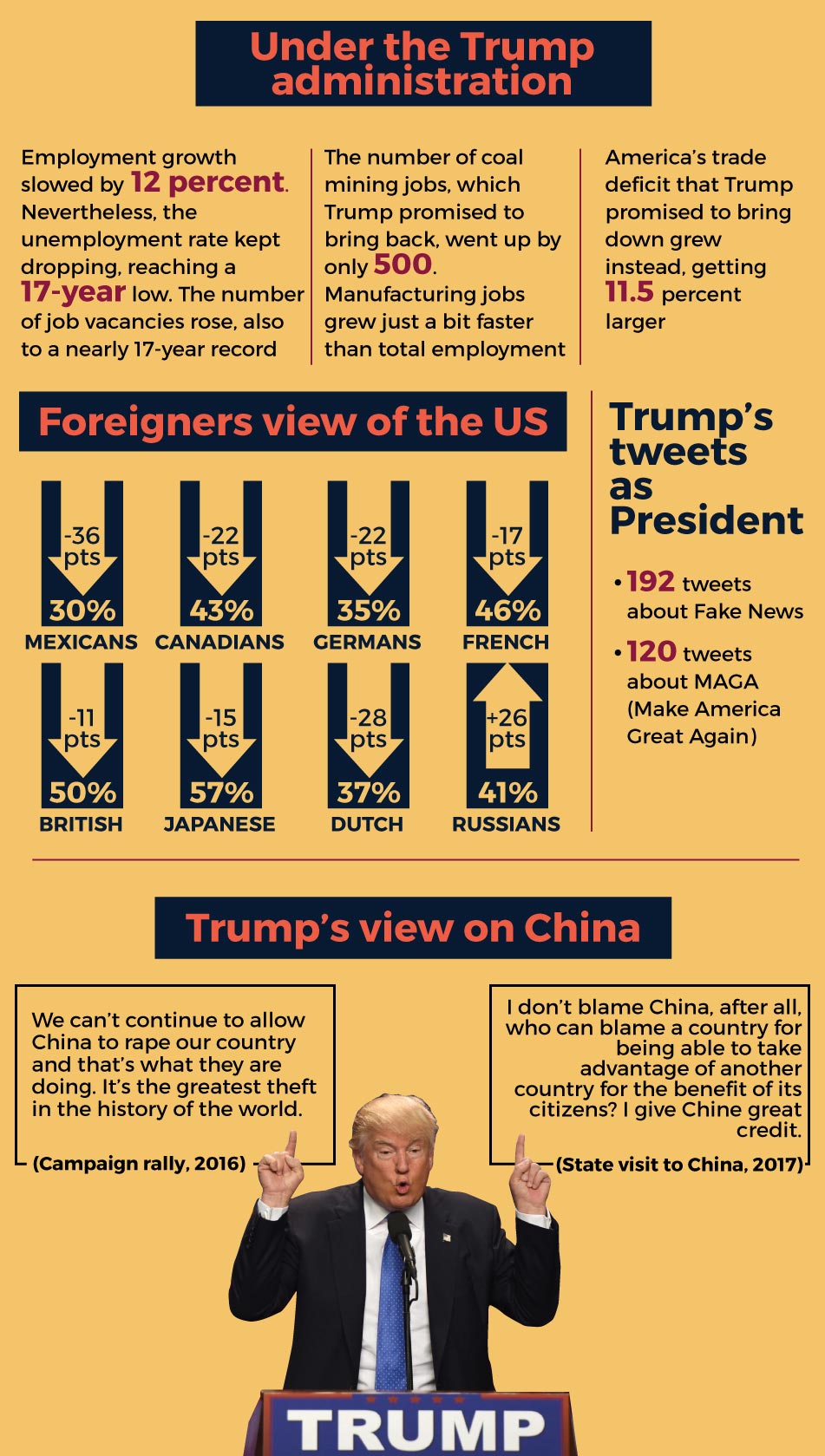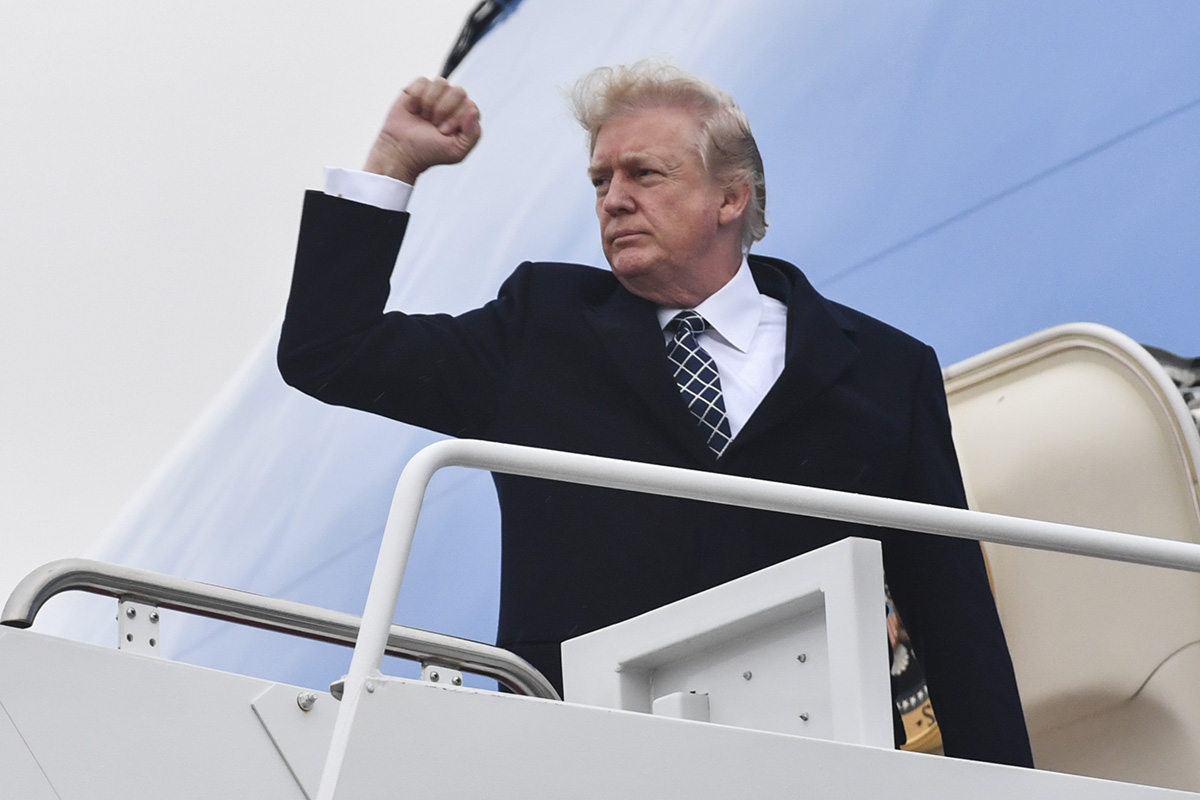During a free trade forum at the Wilson Centre in 2014, United States (US) Trade Representative, Michael Froman addressed a crowd on America’s commitment to free trade.
“By leading on trade, we can carry forward the torch that President Wilson held up a century ago, when he said, ‘The time for provincial thinkers has gone by. We must play a great part in the world whether we choose it or not’,” he proclaimed at the end of his speech.
Froman was an appointee of the Obama administration, whose push for free trade reverberated in this region through the Trans-Pacific Partnership (TPP). However, upon the completion of his second term in office, Obama’s replacement has had different ideas about free trade.
One would not be wrong to assume that Donald Trump, who largely built his fortune from casinos and the hospitality industry would be all for free trade. After all, his shock election to the Oval Office was via a nomination by the Republican Party - famed for its small government, pro free trade fundamentals.
Now, it turns out that Trump follows the beat of a different drum. His America First push was well received by the segment of American society that felt disenfranchised by the elites. He has definitely been successful in reinforcing the backlash against globalisation and free trade which emerged in the aftermath of the global financial crisis. This is also evidenced by his appointment of known sceptics of free trade like Robert Lighthizer, Wilbur Ross and Peter Navarro to key government trade positions.
However, Trump’s actions have led many to question America’s unofficial capacity as the bastion of liberal free trade in the world – as was championed by Trump’s predecessors, regardless of party affiliations.
The liberal internationalist order, so carefully constructed and undergirded by the post-war Bretton Woods system is now moving towards a leadership vacuum. Trump’s rescindment of the TPP, his avalanche of tariffs on imports, his blatantly anti-Muslim immigration policies, his penchant for using Twitter to make presidential decisions, his dismissal of climate change and withdrawal of the US from the Paris Climate Accord are just some of his many actions that have cast doubt on America’s ability to lead the current world order.
Make no mistake, when Francis Fukuyama declared the “end of history” and the victory of Western liberal democracy as the last form of government, he is, in many ways, right but what Fukuyama failed to foresee was who would sit atop the leadership pyramid in that liberal order.
Could it be China? Could it be only China? Might we see a return to a multipolar world – reminiscent of a 19th century European Concert of Powers, or will global leadership be decentralised, paving the way for a more pronounced agency of regional actors?

The outcome of this relies heavily on which economic orbit becomes the most dominant one in the world. China is the name on everyone’s lips when it comes to the future of international trade – slated to surpass the US economy by 2032 according to Bloomberg.
Chinese investments have taken the world by storm. The Belt and Road initiative – Chinese President Xi Jinping’s grand infrastructure project – covers much of continental Eurasia and is expected to cost US$5 trillion over the next five years or so. Beijing has pursued at all costs, measures to strengthen its economic clout by doling out no-strings-attached foreign aid to countries in Southeast Asia and helping finance much of their national infrastructure agenda.
Simply put, China is good for business. China welcomes free trade. Most importantly, since the US has shunned even its allies with its protectionist undertones, they may very well turn to China as it is currently the second largest economy in the world.
Beijing will be a willing buyer of imported products and with every cent spent, more and more, these countries are being pulled into its economic orbit. One thing to note is that, there is nothing sinister with being in a Chinese or American orbit – or even both. Just like how no one forces you to pick a Chinese brand coffee over an American one, states are not bound to do business with one and not the other.
Beijing understands this fully and is becoming more sensitive to the demand-side thus becoming a more attractive option. If the past few weeks have shown anything, it is that, protectionism will leave you guttered whereas a push towards free trade will grant you brownie points in the international arena and China has understood that dynamic for the longest time.
Hence, contrary to popular belief, China does not seek to completely upend the international order and replace it with its own. Instead, it plans to use the vines of the current international order to supplant American leadership and assimilate its values to the current system. While not changing the system completely, but still replacing the current American flavour with a Chinese one.
If this continues, China will expand its dominance because it will simply be the only state economically large enough to tend to global demand and supply. America, with its doors closed cannot be relied upon.
What the world deserves is not solely an American world order or a Chinese one but one where these spheres of influence are allowed to compete with one another and states get to pick and choose which ones they want for themselves. Very simply, America – or specifically Trump – needs to pull up its socks and throw America back into the free trade spotlight. This time, for all the right reasons.
